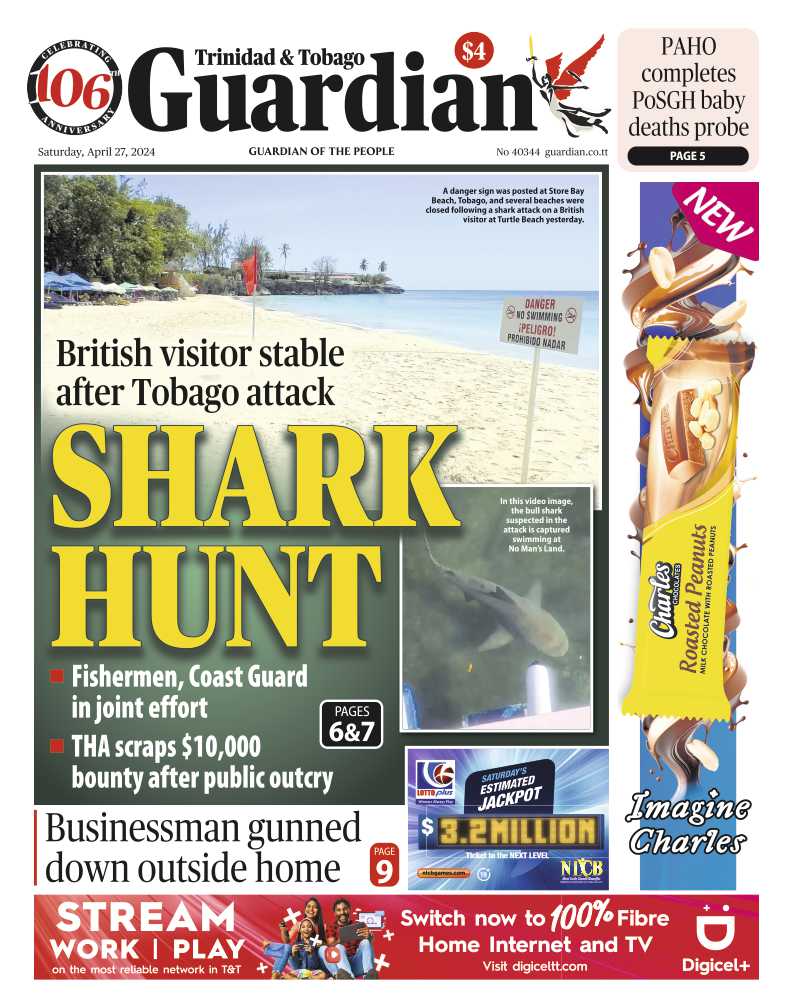Senior Multimedia Reporter
radhica.sookraj@guardian.co.tt
One day after saying there were no United States Marines in the country, Prime Minister Kamla Persad-Bissessar confirmed that a new radar is being installed by the United States in Tobago to monitor activities inside and outside Trinidad and Tobago.
Speaking to reporters after distributing laptops at the Penal Secondary School yesterday, Persad-Bissessar said she has confirmed that US troops are still in the country and have been assisting with surveillance upgrades in Tobago.
Persad-Bissessar’s confirmation came after members of the public reported seeing US Marines at a popular Tobago hotel in recent days.
Flight-tracking platforms also detected military aircraft landing at ANR Robinson International Airport, prompting increasing questions about the presence and activities of US personnel.
On Wednesday, Persad-Bissessar claimed there were no US Marines in the country as all of them had left. Around 350 troops with the 22nd Marine Expeditionary Unit had been in this country from November 16 to 21 to conduct joint training exercises with the T&T Defence Force. But when pressed about the Marines in Tobago, the Prime Minister said, “On further inquiries, yes, in Tobago, there are some. US Marines are there, and they’re helping us with the airport.”
She explained their work includes infrastructure and security support.
“They’re helping with the runway and the road and a radar,” she explained, adding that the installation will “help us to improve our surveillance and the intelligence of the radar for the narco-traffickers in our waters.”
The Prime Minister did not explain why her statements changed within 24 hours, but she maintained that the project is tied to national security and to efforts to counter illicit drug trafficking.
Only on Tuesday, the Prime Minister met with the US military’s top official, Chairman of the Joint Chiefs of Staff General Dan Caine, where they shared their views on regional security challenges, including “the destabilising effects of illicit narcotics, arms, and human trafficking, and transnational criminal organisation activities.”
Since October, the visit of US troops and military assets to this country has intensified.
On October 26, the guided missile destroyer, USS Gravely docked at the Port of Port-of-Spain along with members of the 22nd Marine Expeditionary Unit for training and continued co-operation. The Gravely left on October 30.
Earlier this month, the MEU returned to T&T for joint training exercises.
Meanwhile, a day after US Secretary of War Pete Hegseth visited the Dominican Republic, where that country’s president announced that it had authorised the US government to use restricted areas on the island to help in the fight against drug trafficking, Hegseth visited sailors on the USS Gerald R Ford aircraft carrier. Yesterday, the Pentagon posted a video showing Hegseth speaking into a public address system, wishing all those aboard a happy Thanksgiving and saying he was praying for the two National Guard soldiers who were shot in Washington, DC, on Wednesday.
More questions
Former director of the National Coastal Radar Surveillance Centre (NCRSC), Ret’d Lieutenant Commander Norman Dindial, who is also political leader of the National Transformation Alliance, questioned whether T&T was giving up on its sovereignty by allowing the US to install its radar in Tobago.
Dindial said: “Trinidad and Tobago already have the capabilities to track marine targets of interest and suspected go-fast drug boats around the entirety of its maritime jurisdiction and even up the Caribbean islands with the current sophisticated Israeli radar system in its possession, something that the US wanted to take control of for some time now.”
He added: “The installation of a radar at Crown Point Airport suggests that this capability is for long-range air surveillance and quite possibly target acquisition, not marine targets and boats.”
